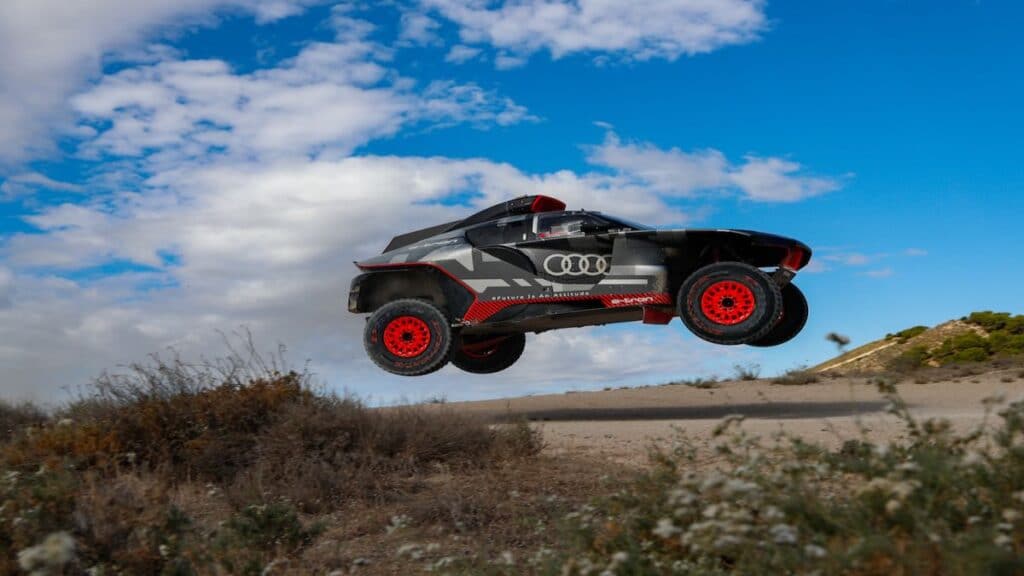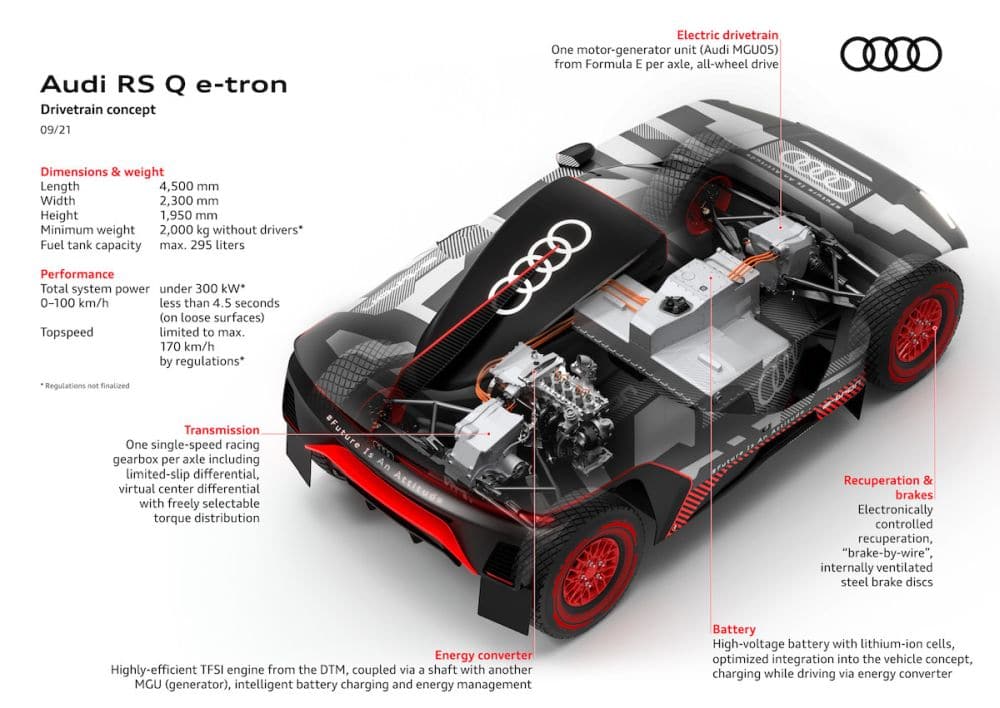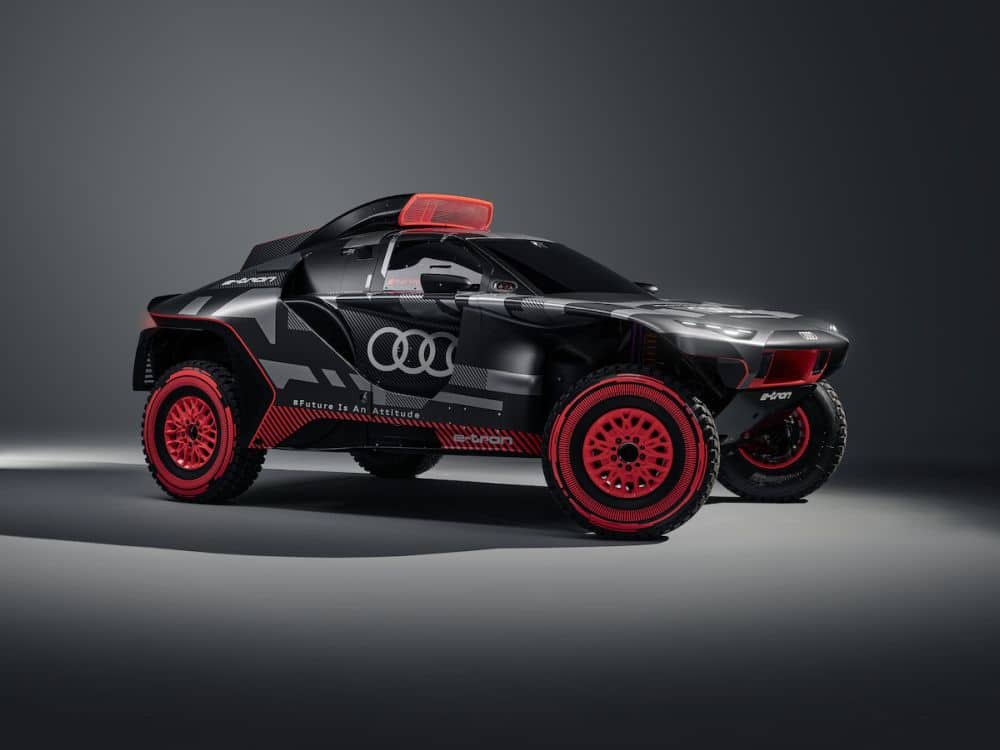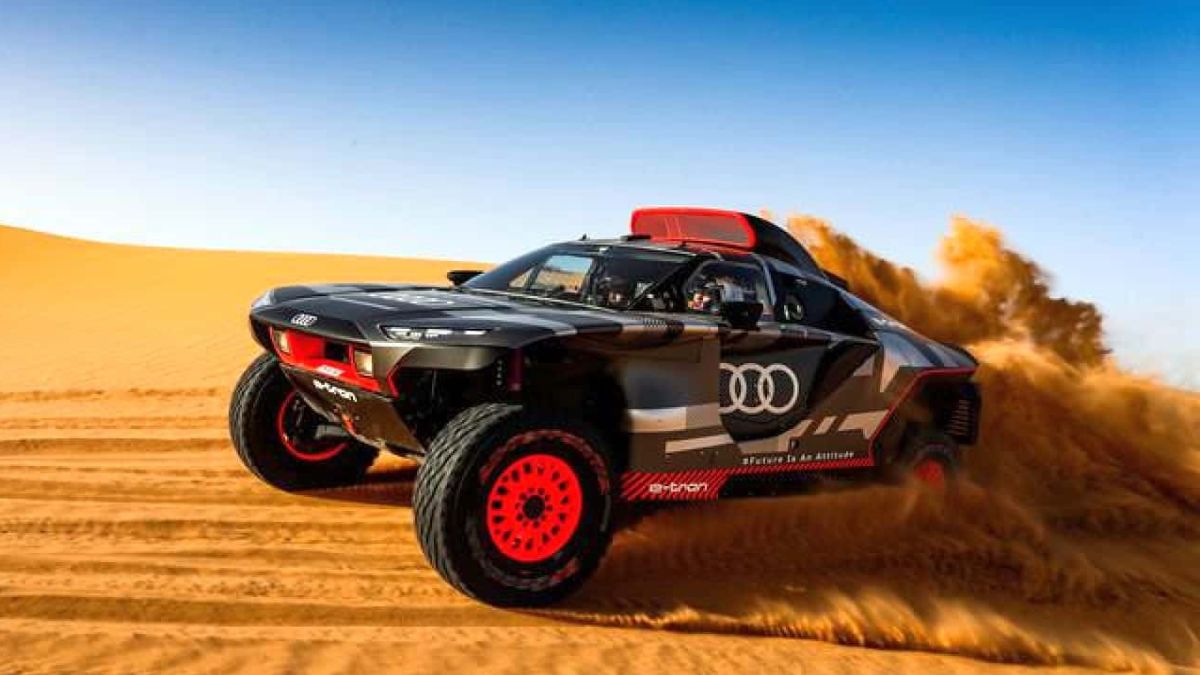The Audi Center Madrid Norte is the place chosen by the German company to unveil the innovative Audi RS Q e-tron, the electrified prototype with which the brand with the four rings wants to make history in the world of motor racing once again, bringing it to try your hand at the Dakar 2022, which will start on January 6th. And to guide this jewel was chosen Carlos Sainz, twice World Rally Champion (1990, 1992), who has already celebrated three Dakar victories with Lucas Cruz as a navigator, in the years 2010, 2018 and 2020 Together, they form one of the three teams with which Audi will fight for victory in the Dakar 2022.
 Audi RS Q e-tron
Audi RS Q e-tron
Racing is in Audi’s DNA. Sportiness, advanced technology and exciting design are the foundations of the brand’s success with the four rings, but it is now taking it a step further by becoming the first carmaker to make a prototype with an electrified powertrain to compete for overall victory in one of the events. of the most challenging rally-raids in the world. For this new adventure the RS Q e-tron is equipped with a powerful electric propulsion system powered by a high-voltage battery that can be recharged while driving.
Audi RS Q e-tron: a development that lasted “only” 12 months
Less than a year has passed since the official start of the Dakar project. This means that the Audi RS Q e-tron was developed in just twelve months. The prototype, which owes its futuristic appearance to Juan Manuel Díaz, head of the Audi Motorsport Design Department, perfectly reflects the brand’s slogan: “At the Vanguard of Technology”.
For the electric propulsion system, a motor generator (MGU) is used on each axle, like those of the Audi e-tron FE07 with which the brand competed in the 2021 Formula E season, with minimal adaptations for use in rallying. The maximum power of the electric thruster is 500 kW (680 hp). A TFSI engine from the DTM together with a third MGU unit form an energy conversion system in charge of recharging the high-voltage battery while driving. The TFSI engine operates in a particularly efficient range from 4,500 to 6,000 rpm, allowing specific consumption well below 200 grams per kWh. The battery, which can also be recharged via the braking energy recovery system, weighs approx 370 kilograms and has a capacity of 52 kWh.
 Audi RS Q e-tron, Drivetrain concept
Audi RS Q e-tron, Drivetrain concept
The Audi RS Q e-tron only needs a “forward gear”. As in the brand’s electric vehicles, there is no mechanical link between the front and rear axles. The software, developed by Audi, is responsible for distributing the torque between the axles, acting as a virtual center differential freely configurable, which has the positive side effect of saving the weight and space that the axles would have required.
 Audi RS Q e-tron
Audi RS Q e-tron
During the presentation of the RS Q e-tron, Carlos Sainz described his impressions after the first tests at the controls of his new car “There are no gears here, you don’t have to release the clutch. As you accelerate, the car flies away, with no delay in response. We have four-wheel drive, but no mechanical differential between the axles. It can be said that it is a virtual permanent differential; so how complex it is to work with this technology, the number of parameters you can play with is really exciting. Everything is managed on the basis of software, which has to be developed and fine-tuned, including the engine brake, which is very effective. When it comes to passing the dunes, for example, it is a very competitive car, you don’t have to worry about the gears you’re shifting or taking your hands off the wheel. But this race is not about winning or losing only in the dunes. We still don’t know where our rivals will be, but the RS Q e-tron will defend well on all terrains ”.
















Leave a Reply
View Comments